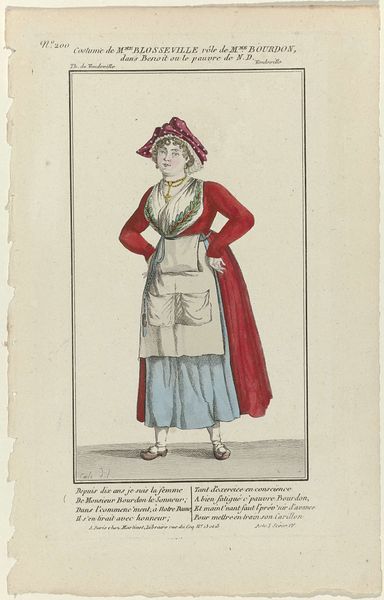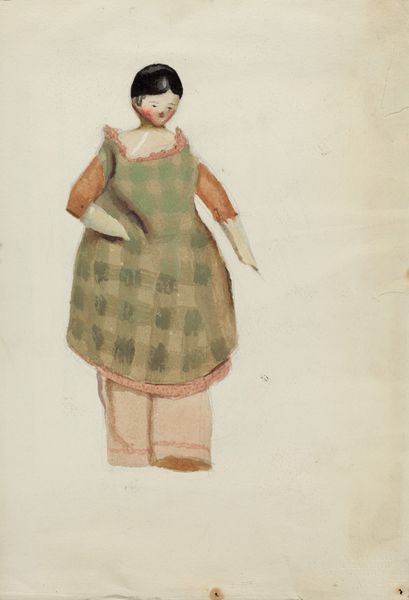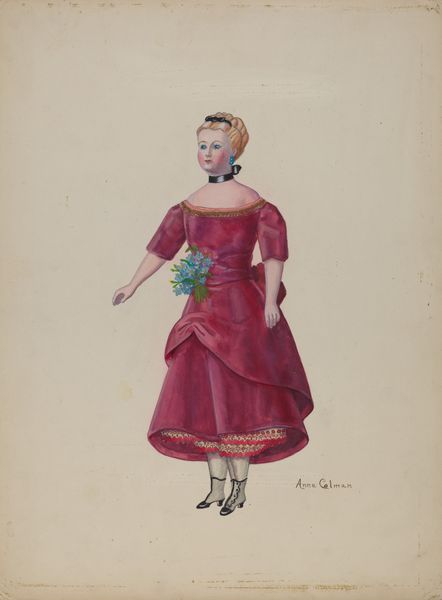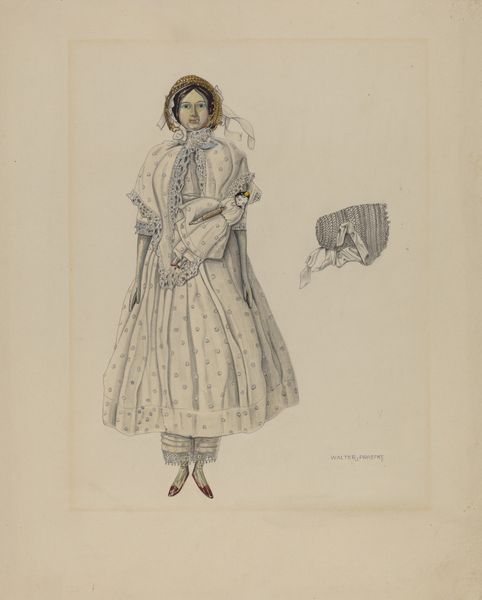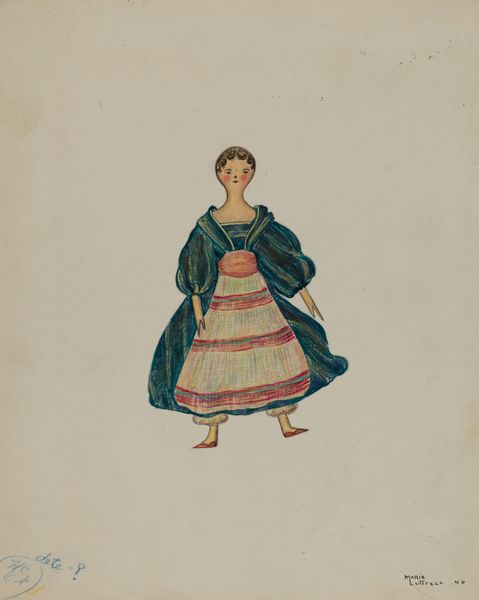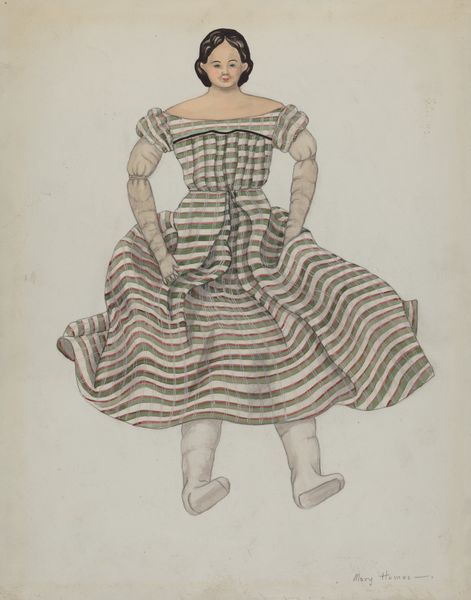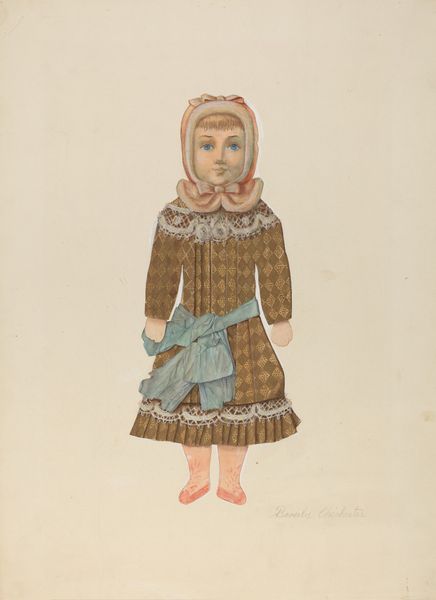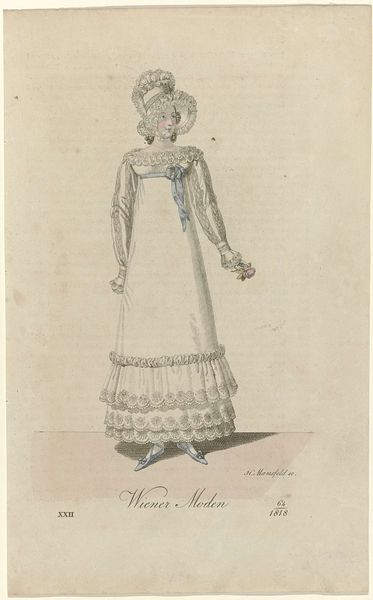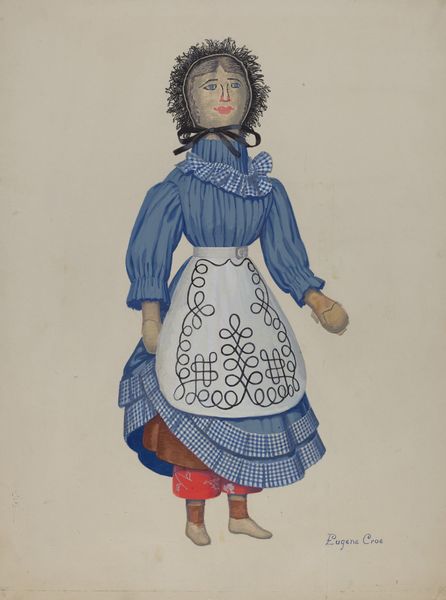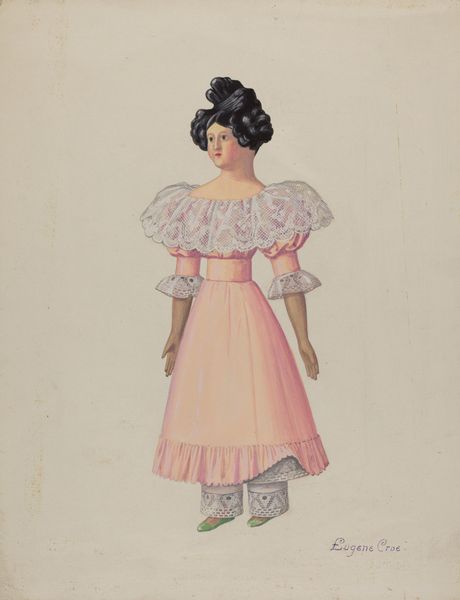
drawing, watercolor
#
portrait
#
drawing
#
figuration
#
watercolor
#
coloured pencil
#
underpainting
#
watercolour illustration
Dimensions: overall: 35.9 x 28 cm (14 1/8 x 11 in.) Original IAD Object: 35" high
Copyright: National Gallery of Art: CC0 1.0
Curator: Here we have Hilda Olson's "Marionette - 'Biddy'," created around 1939, a captivating watercolor and colored pencil drawing. It strikes me immediately. Editor: Well, my first impression is… unsettling, yet strangely captivating. The stiff pose and almost mask-like face, that wide-eyed stare – it feels like a commentary on performativity and social roles. Curator: Absolutely. I am drawn to the labor involved in the textile pattern alone, considering the context of the late 30s and the ongoing debate about fine art versus craft. To me, her presentation points to gendered labor. And notice how the material quality mimics a sort of stagecraft; everything looks intentionally constructed. Editor: Precisely! The social roles she occupies are visualized so neatly with each element: the cap denoting her class and station as some sort of nurse maid or governess, the apron highlighting the idea of labor, the colorful sleeves hint at some celebration just outside her grasp... Curator: And it all boils down to materials—what choices were made by Olson, and how that directs our understanding of "Biddy." The watercolor adds a delicate, almost ephemeral quality that contrasts the sharp lines defining the puppet's structure, which begs the question if the fine strokes are meant to further define "Biddy's" imprisonment. Editor: Yes! By explicitly showing us the 'strings' as lines in a drawing, Olson emphasizes that larger theatrical context. Who pulls these strings, what socio-political power structures put 'Biddy' in her place? Perhaps Biddy has to play up this role due to cultural standards and societal needs of the time. Curator: Examining the production here, I consider her labor to represent something beyond mere craft. She has presented “Biddy” as an almost manufactured, commercially available image of femininity. I now think of the commercialization of gender! Editor: Absolutely, it gives a clear demonstration of the construction and maintenance of that imagery. This seemingly simple drawing prompts complex discussions on so many cultural topics. I wonder what impact it would have had if Olson showed it to different audiences at that time. Curator: The work challenges notions of both 'high' art and accessible images of servitude and labor. I see an object both deeply historical and materially relevant. Editor: Indeed. “Biddy” might be a puppet, but the drawing’s implications resonate far beyond the stage, compelling us to see beyond the performance.
Comments
No comments
Be the first to comment and join the conversation on the ultimate creative platform.
